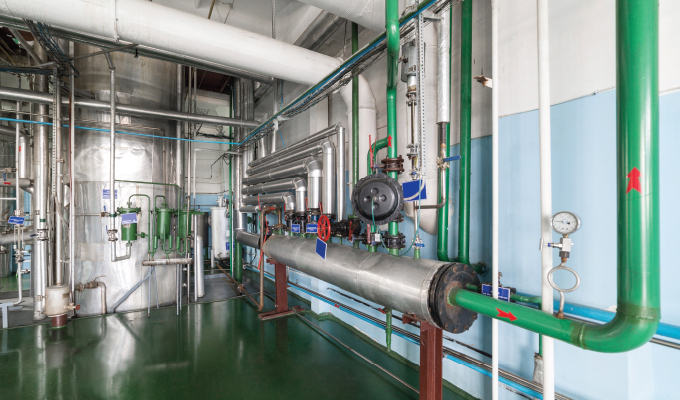By Paul Sharpe, U.S. Water
Building owners are often faced with a decision to test the building potable and utility water for Legionella bacteria. The decision to test, how many locations to test, and how often to test are best structured in a water management plan (WMP) and are specific to each building. The WMP should be developed in accordance with the requirements of the ASHRAE 188-2018 Consensus Standard. Testing should be initiated with the full understanding that positive Legionella cultures are always a possibility; meaning that regardless of the Legionella culture results, the building operations management should be ready to react to positive results.
Culturing for Legionella without a comprehensive water management plan in place is a risky choice and one that should be considered carefully prior to the testing. Many building owners and managers find out the hard way that Legionella bacteria is quite common, emphasizing the point: do not test for Legionella bacteria without a response plan for positive culture results. There are two different event types that most building owners will face regarding Legionella: surveillance and clinical. Each is briefly explained below.
SURVEILLANCE SAMPLING EVENT
Surveillance events are typical, routine sampling cultures for Legionella bacteria. The quantity and locations of the samples will be defined in the water management plan. The positivity of cultures can range from 0 to 100 percent and depending on the percent of positivity, will drive a response—ranging from no actions required to performing a full water restriction disinfection.
Positive culture percentage may not be the only criteria for driving actions. Even a low-level positive culture, if found in an organ transplant or oncology hospital, may initiate emergency disinfection strategies. Facilities such as these should have a zero level goal for Legionella and a high level of surveillance for the bacteria.
If the water management plan is well designed, it will provide the response guidance and strategies for reducing the amplification of the bacteria and minimizing aerosolized water exposures. Surveillance cultures can be important but should not be the only criteria for action. Exposure risk, bacteria concentration, number of positive sites, and serogroup categories should also be part of the risks considered in a WMP.
Clinical Detection Event
A clinical Legionella event is less common but a more impactful scenario when a client, patient or resident has been diagnosed with legionellosis and either worked or housed at the facility, or if there is compelling evidence from an epidemiology investigation by a regulatory agency such as the local health department. Clinical events can also be detected internally if a healthcare facility has protocols in place for checking for legionellosis when a patient is admitted with or develops an undiagnosed fever within a three- to ten-day internment.
If a clinical event is linked to a building, the owner may have no choice on culturing the water systems, as this may be mandated by a regulatory agency. Under these conditions a full water use restriction may be placed on the facility, forcing a building water shutdown, bottled water use, portable showers, and many other disruptions to normal building operations along with mandated Legionella sampling for several months. If a building confirmed clinical Legionella event occurs, restrictions will continue until subsequent culturing indicates no further Legionella contamination. A complete ISO 11731 method requires a seven- to ten-day incubation for a thorough Legionella bacteria culture analysis; this would be the minimum amount of time water use could be restricted. Bacteria isolates may also be requested from the laboratory performing the cultures as part of the epidemiology process.
Apart from the unfortunate human aspect of any disease or infection, clinical Legionella events require a huge investment of resources and cost several thousands of dollars to resolve.
EVENT RESPONSES
If the building water is contaminated with Legionella and an emergency disinfection procedure cannot be accomplished quickly, an alternative is to use water filters specifically designed to remove bacteria. Many health departments will allow this as a bridge between a disinfection process and the installation of permanent secondary disinfection equipment. Filter efficacy documentation will be required along with a change out schedule as part of the process. Installing point of use filters at each faucet and shower in a building is a substantial undertaking in labor and money.
Emergency disinfection strategies, if they are indicated can involve several methods: superheat and flush, hyperchlorination, and chlorine dioxide.
Superheat and Flush
The superheat and flush process can be marginally effective, although the planktonic (free floating) bacteria is destroyed, Legionella can be protected against the high temperatures (160-180 degrees Fahrenheit [71-82 degrees Celsius]) in biofilm that exists in low flow and stagnant areas of piping. Superheat and flush is typically used only on the building hot water system. If the cold domestic water is seeding the hot with Legionella, it is only a matter of time before the bacteria amplify in the hot water again. This method should only be considered as a short-term solution.
Hyperchlorination
Hyperchlorination is effective, heavily dose dependent and is more effective the longer the chemical is in the system. Chlorine in the form of sodium hypochlorite (bleach) is added to the system at high levels and can be used on both hot and cold domestic water.
Chlorine Dioxide
Chlorine dioxide is very effective for both planktonic and biofilm protected bacteria destruction. Chlorine dioxide in solution is a chemistry that will eliminate planktonic bacteria and diffuse into a biofilm microenvironment which differs slightly from sodium hypochlorite. Hot and cold domestic water systems can be disinfected with chlorine dioxide.
If a chemical disinfection procedure is selected, the building owner or facility manager must post and notify all personnel effected by the water restriction and disinfectant application. Warning signs should be posted on each distal outlet stating the water cannot be used during the disinfection process. Chemical injection points must be located or installed ahead of the disinfection procedure and typically involve adding a live tap in the water main as soon as the water enters the building (for cold water). Recirculated hot water systems should have the live tap placed after the heat exchanger. Installing taps in a water main requires specialized equipment and several hours, which will need to be considered in the initial disinfection timing.
Regardless of the chemical disinfection method chosen, using a qualified and experienced water treatment services provider for the process is vital; the building management should involve the vendor as early as possible and coordinate the disinfection process with them. Each one of these methods briefly described above will involve management at different levels, coordination of personnel, many hours of extra work, and careful documentation for reporting purposes. Interrupting a building water supply for an emergency disinfection is a significant operational event, the process will involve several people for the actual flushing procedure and maintaining a watch for the potential for drain blockage and flooding.

MANAGING BUILDING WATER—PLAN AHEAD
According to the National Centers for Disease Control, maintaining a well-designed water management plan is one of the most effective ways to prevent a Legionella event from becoming an emergency situation. Building owners and facility managers can better address a Legionella positive culture or clinical event by planning for and implementing comprehensive strategies that have been shown to prevent Legionella events from developing to a crisis condition.
FOR MORE INFORMATION
Siemens Digital Industries Software, a business unit of Siemens Digital Industries, is a leading global provider of software solutions to drive the digital transformation of industry, creating new opportunities for manufacturers to realize innovation. With headquarters in Plano, Texas, and over 140,000 customers worldwide, we work with companies of all sizes to transform the way ideas come to life, the way products are realized, and the way products and assets in operation are used and understood. For more information, visit www.sw.siemens.com.
U.S. Water, a subsidiary of ALLETE, Inc., provides options for environmentally friendly, safe, and cost-effective water management. As experts in water, they use their in-depth industry knowledge and experience to enhance system reliability, efficiency, and profitability. For more information, visit www.uswaterservices.com.
MODERN PUMPING TODAY, September 2019
Did you enjoy this article?
Subscribe to the FREE Digital Edition of Modern Pumping Today Magazine!



